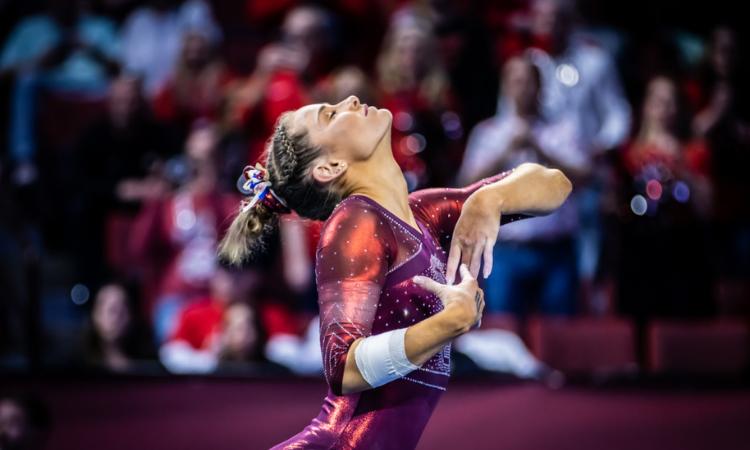With the nationals field now set, there’s one question on the minds of any gymnastics fan: Who will win the 2023 NCAA gymnastics championship? Looking at the data, there may be a straightforward answer– a strong vault rotation. Time and time again, vault has proven to be the critical rotation for any team in the hunt for a national championship. Similarly, less-than-stellar vault performances have been the Achilles heel of many teams looking to enter the winners’ circle. Let’s look at how things like start value and landings impact NCAA final standing and see if we can use this newfound knowledge to predict the 2023 national final.
Start Value
Since the Yurchenko full was lowered to a 9.95 start value before the 2016 season, four of the six national champions have been the team with the highest vault rotation score, and no team has won a national championship while receiving the lowest score on vault– despite teams winning titles while getting the lowest rotation score on other events. This is a reasonably obvious phenomenon regarding start values. A full rotation of 10.0 start values– like that seen by 2021 champions Michigan and 2022 champion Oklahoma– has a .250 advantage over a full counting five-vault rotation of Yurchenko fulls. Since the start value switch, no school has even made it to the NCAA finals without at least one 10.0 start value vault. In reality, this advantage generally sits around a tenth, but in a meet that often comes down to thousandths of a point, a one-tenth advantage can be the difference between winning and losing.
Most recently, this start value issue has hurt Utah. The Red Rocks led the 2022 national championship after the first two rotations (beam and floor). However, when Utah went to vault, relying on non-10.0 start value scores like Maile O’Keefe’s Yurchenko full took Utah out of national title contention. While Utah did have a few 10.0 start value vaults, only Jaedyn Rucker was able to hit the critical 9.9 mark, bringing us to our second point regarding the importance of vault.
Landings
Great work, your team has put up six 10.0 start value vaults– now what? Well, the next step is perfecting those landings. Let’s look at the last national championship that saw two full lineups of 10.0 start value vaults go head to head– 2021. Oklahoma and Michigan brought a full set of Yurchenko 1.5s (though one of OU’s was tucked) to Fort Worth, negating the start value advantage. The difference in vault scores– and eventually the gap between first and second place– came down to landings on the day. Having hard vaults means nothing if you can’t land them, a phenomenon that came to haunt Florida in its journey to the 2022 national championship. Despite having five 10.0 start values, a trio of short landings by Savannah Schoenherr, Payton Richards, and Nya Reed led to the Gators settling for the runner-up position, despite outscoring the winning Oklahoma Sooners by over half a tenth on floor.
Oklahoma’s 2022 run is perhaps the most impressive example of a team winning a championship in a single rotation. Coming into the second rotation of the 2022 national final, the Sooners were in last place after having to count an out-of-bounds deduction on the floor. Not one to let adversity phase it, Oklahoma came back with a trio of stuck (or at least close to stuck) Yurchenko 1.5s from Jordan Bowers, Kat Levasseur, and Olivia Trautman, culminating in a 49.6625 that not only kept the Sooners in the conversation but also ended up being the highest vault score of the championship. Oklahoma has pursued a somewhat vault-heavy recruiting strategy, leading to the Sooners often having more than a full lineup of 10.0 start values, allowing head coach KJ Kindler some room to get picky– a privilege not held by many other collegiate coaches.
So where does this leave us in terms of the 2023 national championship? While many names have flown around as potential candidates to be the next NCAA title-holding team, if the vault formula holds out, Oklahoma will have a heavy advantage going into the national final. The Sooners have the highest NQS and average of the 2023 season, showing technical mastery and consistency. Oklahoma is yet to go below 49.375 on the event, a feat unmatched by any other team in the country. While few things are certain in such a high-pressure situation– like a national championship meet– the Sooners have proven that if anyone can take advantage of the power of a good vault rotation, it’s them.
READ THIS NEXT: Data Deep Dive: Simulating the 2023 Postseason
Article by Ian LeWarn
Like what you see? Consider donating to support our efforts throughout the year! [wpedon id=”13158″]





One comment
Comments are closed.